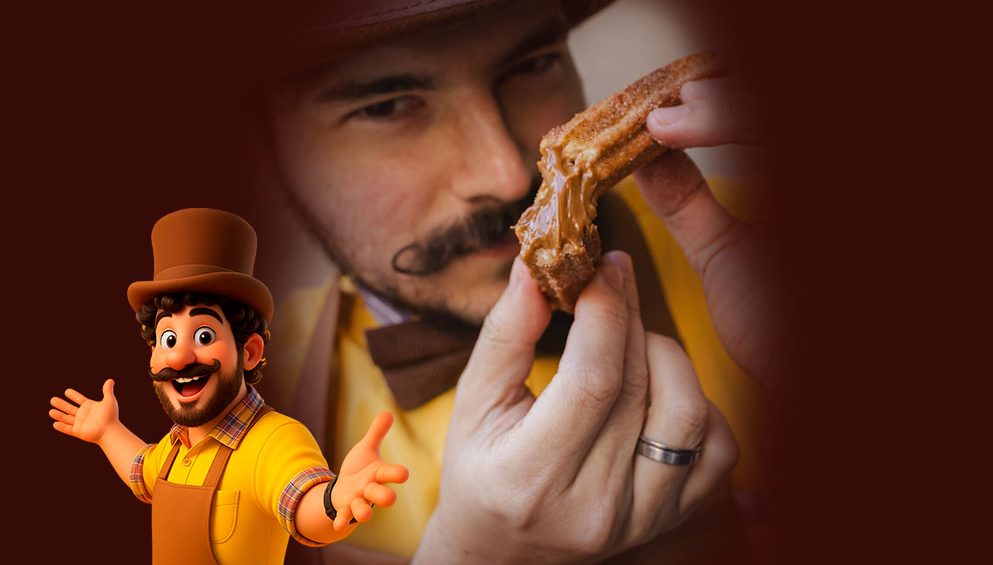More than a dessert — a cultural icon
Churros are more than just a treat. They carry emotional memory, popular tradition and a strong role in urban life. Found at street carts, amusement parks and local fairs, churros have become cultural landmarks in dozens of countries. In Brazil, especially, they are more than food — they are part of childhood, everyday street life and collective memory.
Eating a churro is not only about taste. It’s about the cinnamon aroma in the air, the sound of frying oil and the excitement of that first bite. This sensory experience creates a strong emotional bond, embedding the churro in people’s personal stories.
Brazil’s deep connection with churros
In Brazil, churros have a unique street presence. While in Europe they’re often linked to cafés, in Brazil they’ve taken to the streets. Sold by microentrepreneurs in every region, churro carts symbolize honest work, opportunity and living tradition.
This reflects Brazil’s strong street food culture, where consumption is tied to affection, accessibility and simplicity. Eating a churro on the sidewalk or in the park is a ritual passed from one generation to the next. It’s no surprise the churro has become a national emotional treasure.
Global presence: from Spain to South Korea
Worldwide, churros play distinct cultural roles. In Spain, they are breakfast staples dipped in thick hot chocolate. In Mexico, they’re street market favorites. In Japan and South Korea, brightly colored churros with creative fillings are festival sensations.
In the United States, churros are iconic at Disney parks and trendy food trucks. Though the recipe adapts to local preferences, the churro remains a universal symbol of comfort and joy.
Churros in pop culture and social media
Churros are present in pop culture, especially in Brazil. TV shows and films often portray them as tokens of joy or nostalgia. On social media, churros go viral in cooking reels, influencer challenges and childhood memory posts.
This storytelling power makes churros more than consumable — they become cultural ambassadors, representing shared experiences and collective identity.




